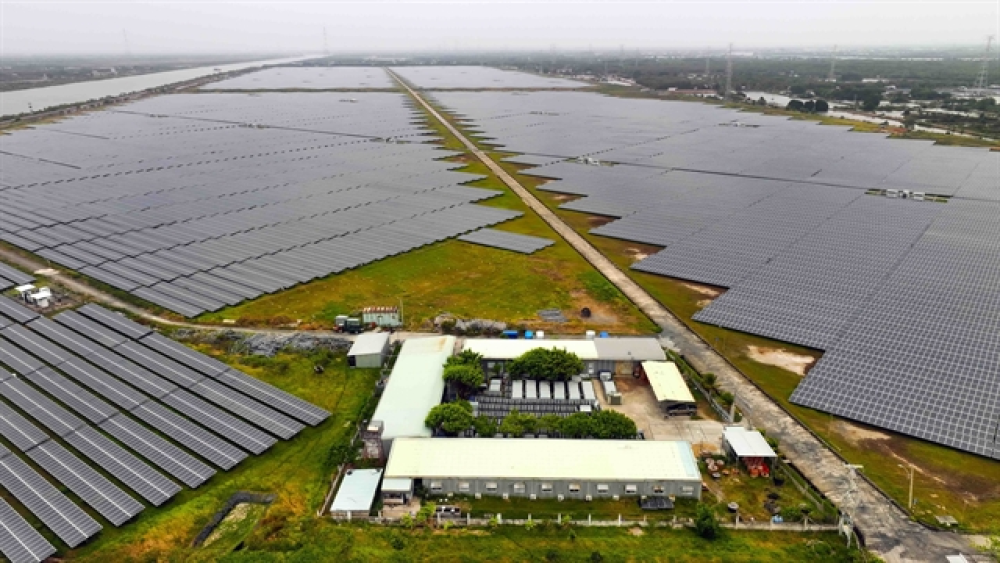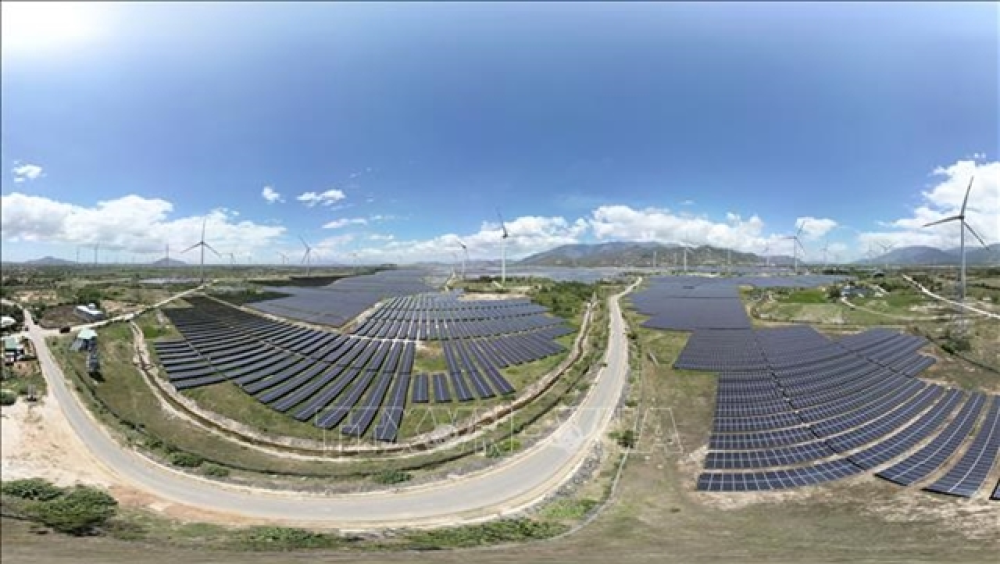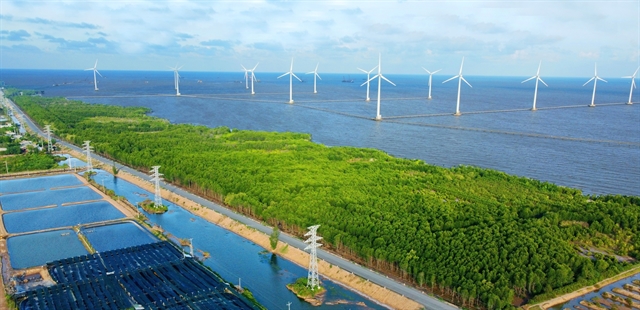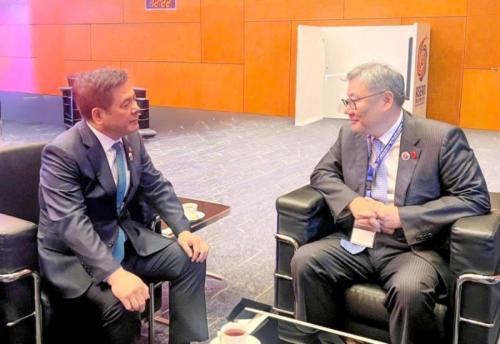Việt Nam charts a new course for energy security
By 2030, Việt Nam aims to maintain a 15 per cent reserve margin in generation capacity, reduce electricity losses, and raise renewables to 25–30 per cent of its total primary energy supply. Greenhouse gas emissions from the sector are targeted to fall by 15–35 per cent compared with business-as-usual levels.
HÀ NỘI — As Việt Nam confronts surging energy demand amid global market swings and climate shocks, securing reliable and sustainable energy has become a national imperative. The Politburo’s Resolution No 70-NQ/TW, issued on August 20, lays out a roadmap to 2030 with a vision to 2045, marking a decisive shift from planning to performance, with success measured by results rather than declarations.
At a recent national conference, Nguyễn Thanh Nghị, head of the Central Party Committee’s Policy and Strategy Commission, acknowledged that after five years of implementing Resolution No 55 on energy strategy, progress has lagged. Of 11 targets set for 2030, only three are on track. Many projects remain delayed, the country’s energy mix increasingly relies on imports, and electricity pricing still suffers from cross-subsidisation.
Resolution 70 aims to reverse these trends by creating a safe, efficient and sustainable energy system capable of powering both industry and daily life. It outlines a gradual transition toward low-carbon growth, smart operations underpinned by digital technology, and a fair, transparent pricing structure.
By 2030, Việt Nam plans to maintain a 15 per cent reserve margin in generation capacity, reduce electricity losses, and raise renewables to 25–30 per cent of total primary energy supply. Greenhouse gas emissions from the sector are targeted to fall by 15–35 per cent compared with business-as-usual levels.
Domestic refineries are expected to meet at least 70 per cent of national fuel demand, while petroleum reserves should cover 90 days of net imports. The country also intends to expand liquefied natural gas (LNG) import capacity. By 2045, Việt Nam envisions a fully sustainable, competitive and globally integrated energy system.
Dr Nguyễn Quốc Việt, policy expert at the University of Economics, Vietnam National University, Hà Nội, described the Resolution as a turning point for the energy sector, opening the market from generation to transmission and retail to real competition and ending long-standing cross-subsidies and price distortions.
Experts also noted that the policy ushers in a more diversified, transparent and efficient energy system. Nuclear power, once shelved, has been reinstated as a cornerstone of long-term stability, with plans to revive the Ninh Thuận 1 and 2 projects.
The framework also tackles persistent bottlenecks in planning, financing and investment by introducing mechanisms such as state guarantees for strategic projects, paving the way for large-scale ventures. In the renewable sector, reforms focus on transparent, long-term power purchase agreements, competitive project bidding, and direct purchase contracts between producers and large consumers.
Deputy Minister of Industry and Trade Nguyễn Hoàng Long stressed that Resolution 70 provides a foundation, but its success depends on swift and decisive implementation.
“We must act immediately, not step by step. By 2025, all institutional bottlenecks must be removed to create real breakthroughs,” he told Tin Tức (News) online newspaper.
“With strong political determination and coordinated action, the Resolution will soon take root in daily life, ensuring national energy security and a sustainable future for Việt Nam.”

Energising competition
Under the new framework, the Electricity of Việt Nam Group (EVN) will no longer hold a monopoly over electricity trading. Industrial consumers will be able to negotiate directly with suppliers, fostering competition and innovation.
Transmission infrastructure, previously restricted to state entities, will be opened to private and foreign investment, with flexible fee mechanisms to attract capital and reduce the burden on public finances.
For renewables, especially offshore wind, the Resolution sets a 2025 deadline to resolve legal and pricing barriers, creating momentum for new projects and accelerating clean energy deployment.
Director of the Centre for Energy and Green Growth Research Hà Đăng Sơn said the Resolution marks a decisive shift toward market pricing.
“It moves away from subsidies and promotes transparency and efficiency,” he said. Renewable energy, he added, must operate under fair and competitive conditions to thrive.
The policy also calls for stronger power grid infrastructure, expanded fuel reserves and a strategic return to nuclear energy to reinforce long-term supply security. With effective implementation, renewables could supply up to 30 per cent of electricity by 2030.
General Director of the Việt Nam Coal and Mineral Industries Group (TKV) Vũ Anh Tuấn said coal remains an important part of the energy mix as the country transitions to cleaner fuels. However, extraction is increasingly difficult and costly.
TKV is prioritising key projects such as the Bình Minh Mine expansion worth VNĐ1.1 trillion (US$41.8 million) to sustain domestic production and supply stability.
Deputy General Director of EVN Nguyễn Xuân Nam said the group will pilot a two-component electricity pricing system in 2026, separating capacity and energy charges. This model aims to improve transparency, fairness and efficiency as renewable energy capacity expands and electricity demand grows by 12–15 per cent annually.

Uneven expansion
According to Phạm Nguyên Hùng, Director of the Electricity Regulatory Authority of Việt Nam under the Ministry of Industry and Trade (MoIT), the ministry has swiftly developed an action plan to implement Resolution 70, with priorities centred on institutional reform, stronger oversight and enhanced energy security.
Since 2012, Việt Nam’s power market has expanded significantly — from 31 plants with a combined capacity of 9,212 MW to 118 plants totalling around 34,000 MW in 2025. Private investors now own about 51 per cent of these facilities, reflecting growing social investment in the energy sector.
However, the expansion has not been fully synchronised.
Hùng said that market participation remains limited, the wholesale market is still incomplete and an auxiliary services market has yet to take shape. Negotiations for power purchase agreements continue to drag on, while retail prices remain weighed down by cross-subsidies and the absence of effective risk management tools.
Minister of Industry and Trade Nguyễn Hồng Diên said Resolution 70 is a “mandate from reality,” requiring simultaneous reform across institutions, technical systems and markets.
The ministry has already completed revisions to the Electricity Law within nine months, issued related decrees and circulars, and adjusted Power Development Plan VIII to give investors clearer guidance.
The MoIT has also restructured the National Load Dispatch Centre into the independent National Power System and Market Operation Company (NSMO) to ensure transparency and independence.
To support pricing reform, the Government’s new Decree No. 72/2025/NĐ-CP establishes mechanisms for adjusting retail electricity rates, generation frameworks and service fees. It also introduces tariffs for tourism and electric vehicle charging, while simplifying household pricing and preparing to pilot two-part pricing by the end of 2025.
Minister Diên said that Việt Nam’s electricity market remains incomplete, with key barriers in investment, pricing and transparency.
“Removing these obstacles is essential to building a competitive and efficient power market,” he said.
Institutional reform
Dr Việt noted that the most transformative element of Resolution 70 is its focus on institutional reform — 'removing the bottleneck of all bottlenecks.' Allowing private firms equal participation at all stages of the energy chain, he said, will enhance competition and efficiency.

Liberalising the transmission, distribution and retail stages is particularly crucial.
“Once the retail market opens, consumers will benefit directly, with transparent pricing, diverse services and even options for green electricity,” he said.
Dr Việt also emphasised that investment in energy storage, LNG facilities and fuel depots presents significant opportunities for private investors, helping strengthen national resilience.
Under the revised Power Development Plan VIII, Việt Nam’s total installed capacity must triple within five years — from 81,000 MW to as much as 251,000 MW. This target poses enormous challenges amid limited capital availability and cautious private participation due to policy and pricing uncertainties.
Minister Diên urged greater transparency in cost-based pricing for distribution and transmission, alongside improved management of primary fuels such as gas and LNG to ensure efficiency and security.
To translate the Resolution into action, the MoIT has assigned specific tasks to its departments and state energy corporations, including EVN, Petrovietnam (PVN) and TKV, which will coordinate closely to safeguard national energy security through 2030 and beyond.
Though challenges remain, the direction is clear as Việt Nam aims to build a transparent and competitive electricity market that will serve as the foundation for sustainable growth and long-term energy security.
Source: VNS
Photo: VNA/VNS





